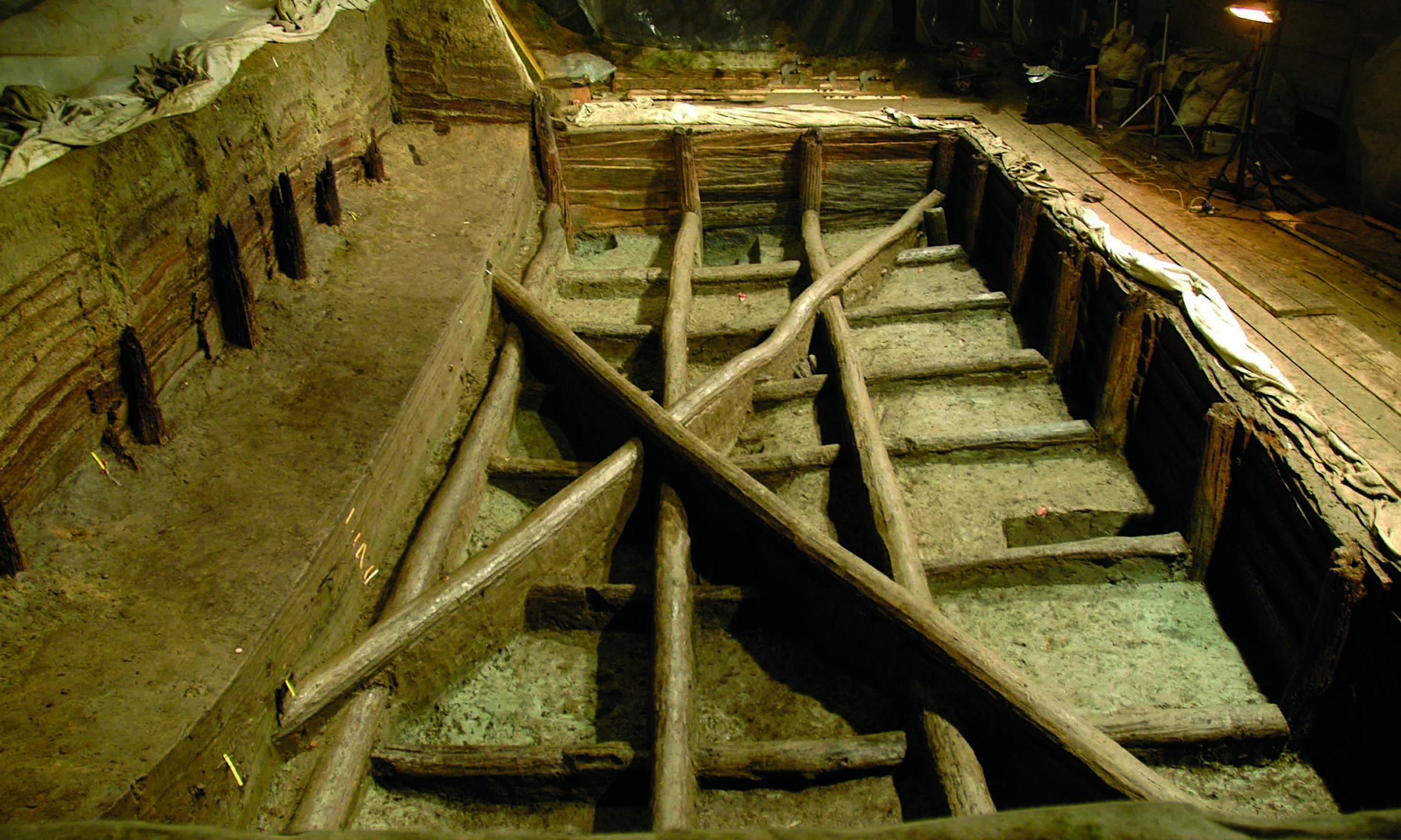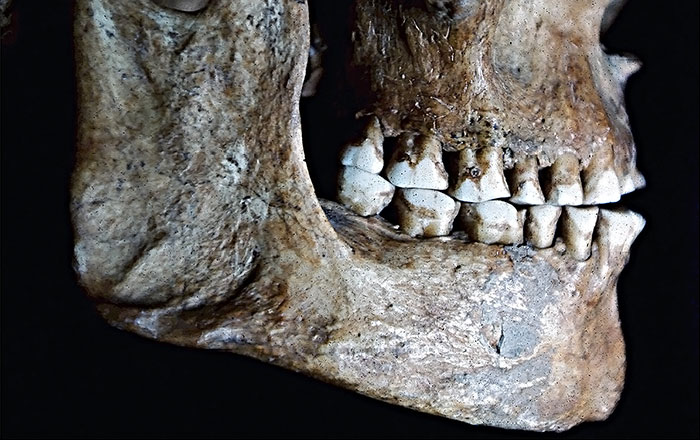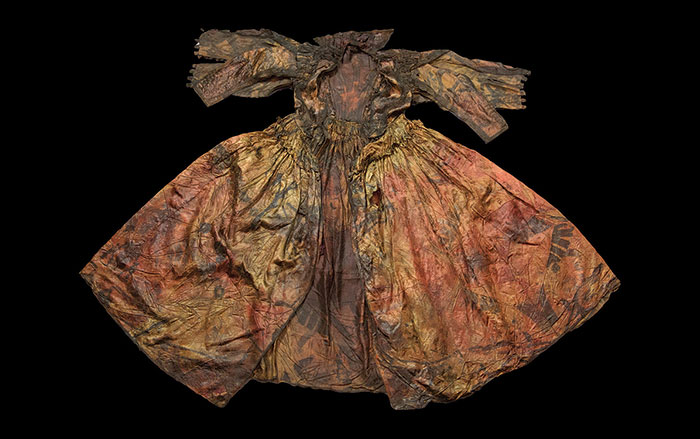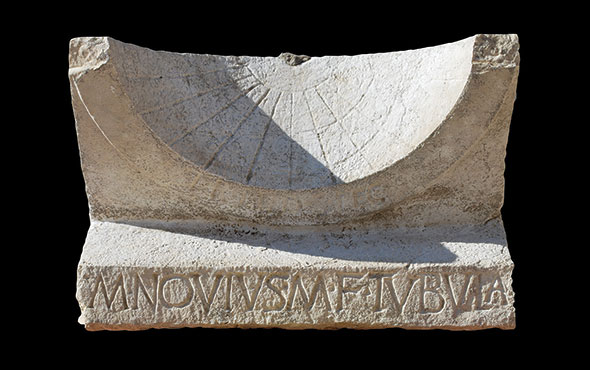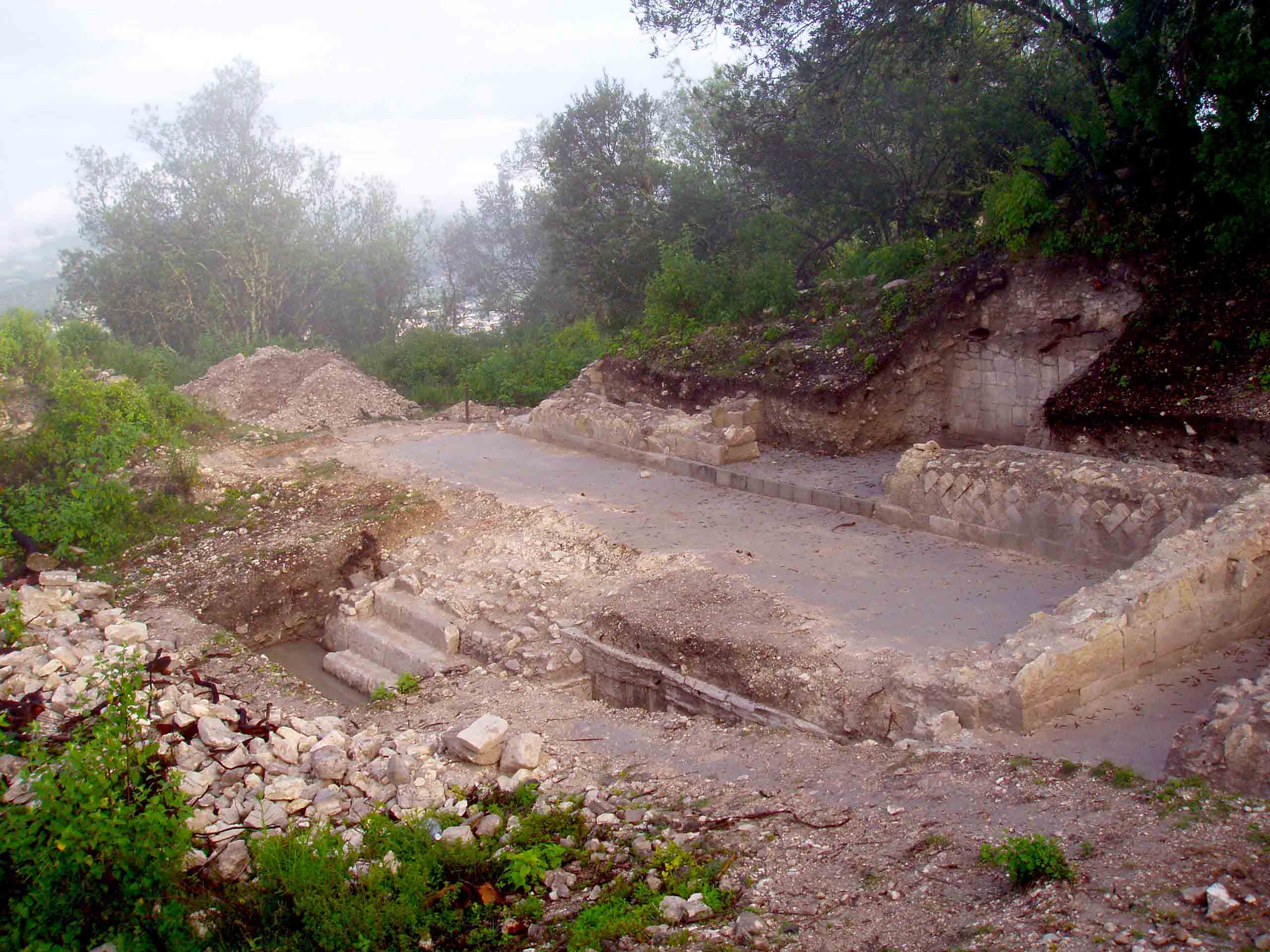
High in the Philippine Cordilleras, the terrain is a work of engineering and art so stunning it has been called the Eighth Wonder of the World. Steep, furrowed mountains are sculpted into terraces, stacked one atop the other, following the craggy contours of the land. In lush green paddies, people cultivate rice just as their ancestors did, passing the land down from one generation to the next.
Since 1995, UNESCO has included the rice terraces of Ifugao Province on its World Heritage list, describing them as expressions of “harmony between humankind and the environment.” Ecology, geography, and agronomy mingle with the culture, religion, economy, and politics of indigenous Ifugao life. “The rice terraces are emblematic of Philippine heritage; they exemplify human ingenuity and humanity’s ability to modify even the most marginal landscape,” says University of California, Los Angeles, anthropological archaeologist Stephen Acabado, who was born in the Philippines and has researched the region for years. This intricate agroecological system, he says, highlights the consonance between human needs and sustainable ecological management.
According to UNESCO and Philippine history books, the rice terraces were built 2,000 years ago by the ancestors of today’s Ifugao people. But this description is problematic, Acabado says, because it’s not based on any scientific evidence. Rather, it stems from the work of early twentieth-century anthropologists Roy Franklin Barton and Henry Otley Beyer, who calculated the terraces’ age based on the length of time they guessed it would have taken people to build them.
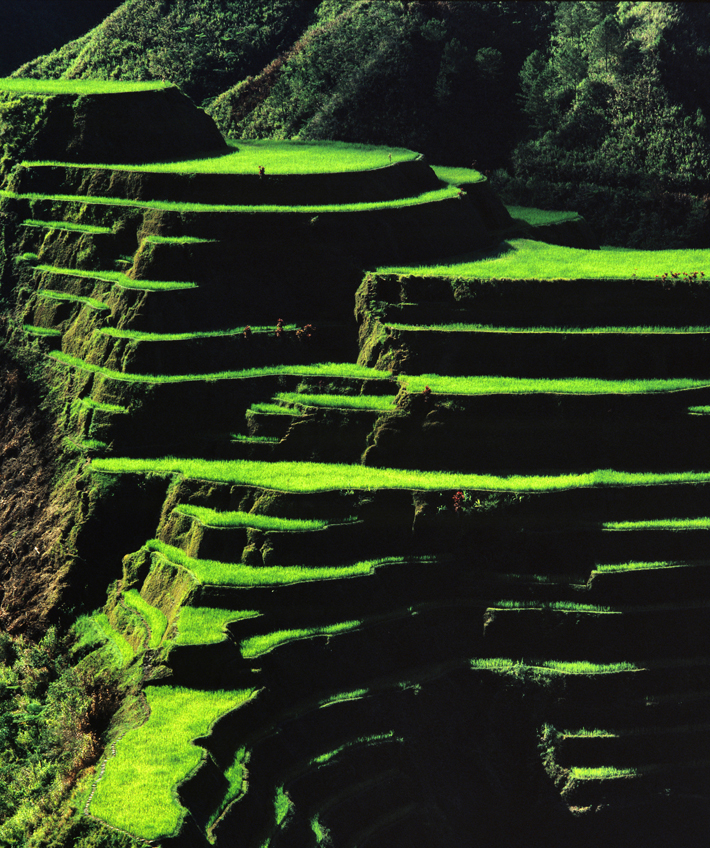
By contrast, Acabado’s archaeological investigations show that the adoption of wet-rice agriculture, accomplished by planting seedlings in flooded fields, is much, much younger in Ifugao than previously thought—1,600 years younger, in fact. While some terraces likely existed in Ifugao centuries before that, Acabado says, evidence suggests they were used for growing taro, not rice, and that those terraces were small. Imagine the difference between a backyard garden and the expansive farm fields that define much of the American Midwest. That’s the kind of difference Acabado believes existed between the earliest Ifugao terraces and what we see today. According to him, the spectacular landscape that garnered Ifugao World Heritage status dates to an era that coincides with the arrival of Spanish colonizers. For Acabado, that changes everything.
The dominant historical narrative told throughout the Philippines is a story of small, remote minority populations that moved higher and higher into the mountains over millennia as waves of new people arrived and settled in the lowlands. It is accepted that Spanish colonizers were unable to conquer the Ifugao because the terrain they occupied was so rugged. This paints the highlanders as essentially outside the march of history, as bystanders, while colonization and modernization swept through other corners of the Philippines. This account is what Acabado recalls learning in school. By the time he reached college, he realized it was based on colonial notions of indigenous people. “I started to think about how to decolonize our history,” he says.
Acabado knew it was important to date the terraces archaeologically. When the evidence connected the timing of the origins of Ifugao wet-rice cultivation with the arrival of the Spanish, he envisioned an entirely different narrative, one of determined people who took refuge in the mountains when faced with the prospect of colonization. “They were not mere spectators on the sidelines of history,” says Acabado. Rather than retreating, they reshaped their culture through the development of an intricate agricultural system that depended on organization, social unity, and ritual feasts. “Wet-rice agriculture was an expression of imperial resistance,” Acabado says. “It also facilitated political integration.”
Contrary to previous thought, it is also now known that colonial-era Ifugao were not isolated. Archaeological findings of ceramics and glass beads show they had established continuous contact and trade across China and elsewhere in Asia between 1600 and 1800. The Ifugao also introduced new foods—domesticated pigs and water buffalo—to the highlands.

With the intention of scientifically documenting local history, Acabado joined other archaeologists from the Philippines, Hawaii, Guam, and elsewhere to launch the Ifugao Archaeological Project (IAP) in 2012. The organization sponsors an archaeological field school and contributes to local heritage conservation projects. “Most of what we know about our history is contained in our oral history,” says Marlon Martin, chief operating officer of Save the Ifugao Terraces Movement (SITMo), a nonprofit cultural conservation group that collaborates with the archaeologists. “IAP’s research has made things clearer and empirical,” he says.
The position that the IAP takes does have its detractors. The Archaeology Division of the National Museum in Manila released a statement in September of 2017 signed by eight scientists and researchers saying, “We do not agree that the rice terraces are as young as [he] claims.” They emphasize the need for further research before drastically rewriting history. Their criticism centers on the fact that Acabado’s excavations focus only on one area of Ifugao, known as Kiangan.
Acabado says, “I could not agree more with their assessment that a region-wide research program in and around the Ifugao highlands is necessary.” This could aid his goal of adding indigenous perspectives to a government-designed education system that he thinks remains rooted in its colonial origins.
Standard textbook lessons throughout the Philippines portray highland people in stereotypical terms as “primitive,” “warlike,” and “savage,” says Pia Arboleda of the University of Hawaii’s Filipino and Philippine Literature Program, who studies indigenous oral histories. She thinks mainstream Philippine society doesn’t take into account the diversity of the country, which is home to dozens of ethnic groups. “People don’t really like to accept that we are a multicultural, multiethnic community,” she says. “An entire generation of Ifugao has been made to believe, by the formal education system, that the terraces are 2,000 years old,” says Martin. SITMo helps Acabado’s team conduct educational programs on the archaeologists’ scientific findings.
Acabado notes an additional flaw in the standard view of Ifugao history. It implies that Ifugao ancestors did little beyond growing rice for 2,000 years. This has never made sense to him, because elsewhere in the world, the emergence of intensive farming typically coincides with scientific and other developments. He sees the Ifugao shift to wet-rice cultivation as a story of strength.

The Philippines as a whole suffers a dearth of archaeologists, says Grace Barretto-Tesoro, an IAP member. Her institution, the University of the Philippines Diliman, is the only one in the country that grants archaeology degrees. “There are foreign archaeologists who come and go,” she says. Much more comprehensive study is needed. Acabado conducted his first Ifugao excavations in 2007 while working on his Ph.D., and he has followed up with multiple digs since 2012. It’s hard to archaeologically date agricultural features because of the nature of agricultural soils. “They keep on churning,” he explains, as the dirt is turned with each new season. Unlike most archaeological sites, Ifugao is a land in action. People still use the fields today. Terrace walls frequently collapse from old age and wear and tear. Acabado had to devise a methodology to address those issues.
He examined how the terraces were constructed and discovered that the foundations were made of large boulders that stay in place even when the walls they support collapse. Acabado was able to design a statistical model for dating the surrounding soils based on the idea that despite the constant churning of those topsoils, whatever substance remained under the terrace foundations would logically be the oldest.
By listening to the oral stories of Ifugao people today, researching possible historical migration routes, and tracing plausible passages that followed riverbeds from lowlands to highlands, he found evidence of dates that were progressively younger the higher he looked in the mountains, and hypothesized that early migrants settled in areas they could manage and farm. In addition, Acabado and his colleagues have searched for direct evidence of wet-rice production in what is thought to be the first Ifugao village, Old Kiyyangan, which was settled about 1,000 years ago. “It wasn’t until 1650 that we see a clear, unambiguous appearance of wet rice and also grasses that are associated with wet rice,” Acabado says.
Researchers collected 12 sediment samples from two trenches for pollen, phytolith, and starch analyses. The earliest rice remains appear in terrace sediments dating to roughly 675 years ago, but it isn’t until between 470 and 530 years ago that the results show a marked increase in these rice remains. This supports a later date for the expansion of wet-rice cultivation in Ifugao. Further, the team tested cooking-pot residues to determine what locals were eating in precolonial times. They found evidence of taro and a substance similar to sugarcane—but no wet rice. “With that knowledge,” says Acabado, “we argue that there would have been terraces in the region, but not for rice.” Small-scale terraces such as those found in Hawaii and other Pacific Islands would have been used for taro, but not until the Spanish arrived did the region see a distinct population increase and a massive undertaking in the change to wet-rice production. That’s when Acabado suggests that Ifugao’s iconic sculpted landscape came to be.
Initially, Acabado thought it logical to find wet rice at the same time as a population increase because it’s a more productive crop than taro and can feed more people. “It also has a longer shelf life. Much, much longer. It can last for 20 years in a perfect environment, as opposed to taro, which can last for only two weeks at most,” he says. But further research showed that wet-rice production in Ifugao supported only 10 percent of the population. The vast majority continued to eat other carbohydrates, likely sweet potatoes, taro, and dry rice grown in swidden fields. Paddy rice was an elite meal, accessible only to society’s upper classes.
Why did the Ifugao start growing wet rice at all? Why not stick to taro? The answer gets to the heart of Acabado’s theory. When the Spanish arrived in the Philippines, the Ifugao consolidated their power in the mountains. They shifted to a form of agriculture that required social organization to manage the control of water, hard labor, access to land, and shared resources. The upper classes owned the land, the lower classes worked it. Wet-rice production was not an economic move, Acabado believes, but one of social structure. The Ifugao performed rituals for every stage of the agricultural cycle, and in anthropological literature, such rituals are portrayed as cohesive activities key to group organization. That organization is what Acabado thinks allowed the Ifugao to collectively fend off the Spanish. “It was just really amazing how the data fell into place to support the model,” says John Peterson, IAP member and director of the Office of Research and Sponsored Programs at the University of Guam. Peterson has decades of archaeological experience in the American Southwest and the Pacific. He says IAP data suggest early Ifugao taro terraces date to about 1,500 years ago. Those terraces preadapted the region for an expansion to wet-rice paddies.
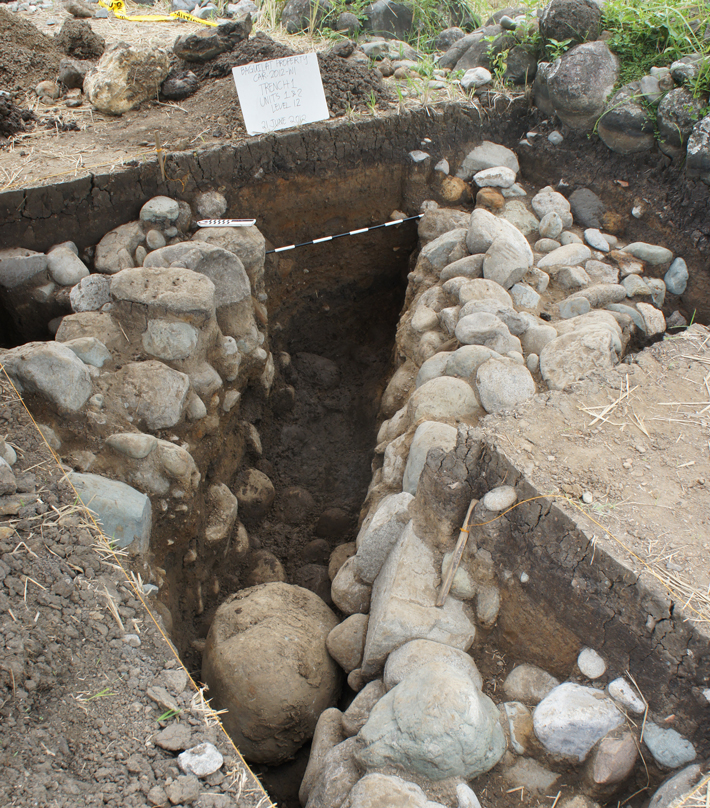
Using basic tools and materials as the early Ifugao might have, the researchers constructed their own terrace system. It took the team 11 days to build a 10-level system of stone walls more than six feet high. Acabado says, “It is not unthinkable that [early Ifugao] were able to modify the landscape in a very short amount of time.” IAP hopes to change the terraces’ age in the UNESCO description to reflect the new archaeological evidence. “We’ve got to address that,” says Peterson. But what would this take?
The Philippines national government must submit a modification request to UNESCO. “This will be treated as a new nomination,” says Feng Jing, chief of Asia and the Pacific for UNESCO’s World Heritage Centre in Paris. “It is up to the State Party of the Philippines.” That means the national government must agree that a change should be made. However, the government is not ready to draw conclusions, as noted in the National Museum’s statement. “I have differing views from experts,” says Lila Ramos Shahani, secretary general of the Philippine National Commission for UNESCO. “Scholars often differ in their views, and it’s my job to listen to all of them.” The conversation has prompted her to attempt to organize a conference with the National Museum.
In the meantime, Acabado’s scholarship is highly regarded in the Philippines. “The government accepts Stephen’s work as contributory to arriving at some understanding of the complexity of the terracing issue,” says Jesus Peralta, a consultant to the National Commission for Culture and the Arts. It takes time for new research to work its way into the educational system, he says. “The story behind the terraces is much more complex than we think.”
Historically, rice and rice farming have framed Ifugao identity. But times are changing, and so is local culture. “Many young people no longer farm,” Peralta says. Thanks to a government that makes higher education inexpensive and accessible, they leave their villages for city jobs, or they go to college. Consequently, terraces sometimes fall into disrepair. For several years, along with World Heritage status, UNESCO placed the rice terraces on its list of endangered sites. They were removed from the list in 2012 after the success of a movement aimed at preserving the landscape and its traditions. “The foundation of Ifugao culture is the rice,” Martin says. “All religious rituals of the Ifugao have a reference to rice and rice gods, and ancestors who owned rice terraces.” His group aims to preserve that legacy.
This is not easily accomplished. For one thing, Acabado says rice production in Ifugao is actually no longer economically viable. During one of his expeditions, he talked with a landowner who paid $1,000 in costs associated with one season of rice production—but earned only $700 back. Nonetheless, Acabado believes that there are greater incentives for the Ifugao to continue cultivating. “It’s not about the money,” he says. “It’s more about the prestige and also about continuing their heritage.”


